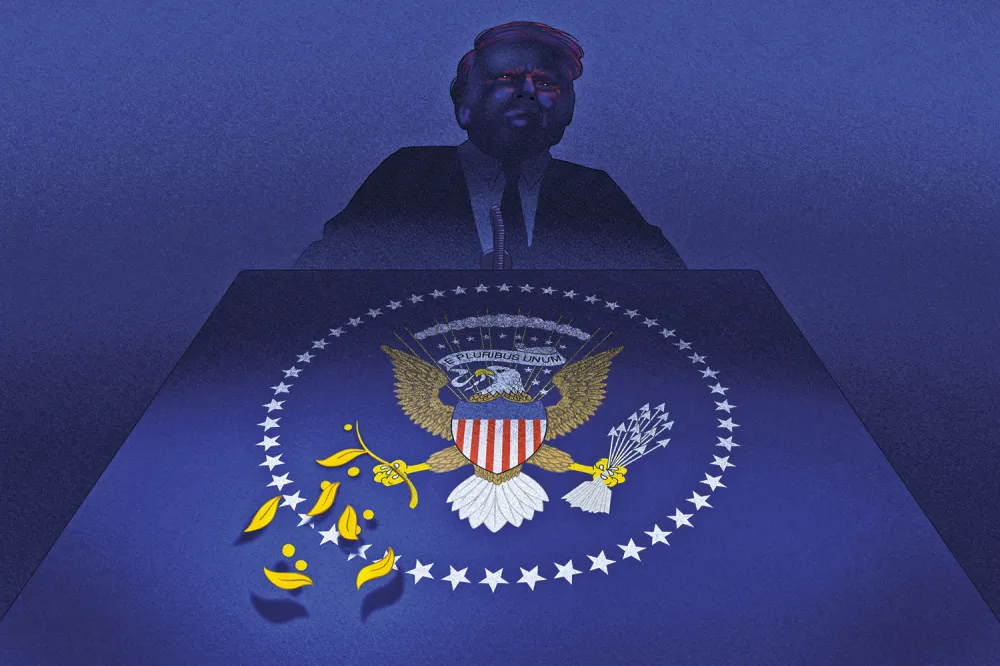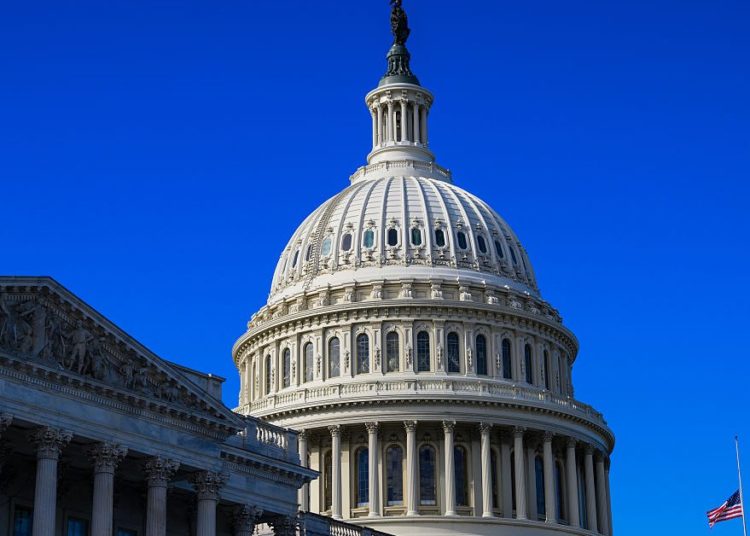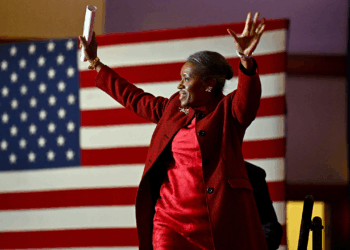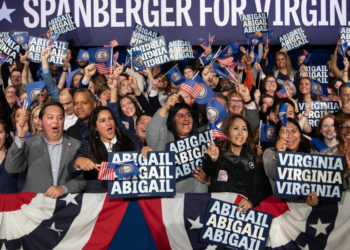In historical perspective, it is a new thing for U.S. presidents to say they are shaping foreign policy with human rights in mind. Jimmy Carter redefined the presidency in this way only a half century ago. And in the subsequent era, human rights exerted gravitation powerful enough that no presidents escaped it—including Donald Trump in his first term.
But there’s reason to think the human rights era may be over. The Trump administration has already moved to eliminate one of Carter’s practical legacies, the undersecretary position overseeing human rights, while pushing the Bureau of Democracy, Human Rights, and Labor to a lesser and subordinate place in the State Department’s organizational chart as a minor office for “democracy, human rights, and religious freedom.” Even after Trump departs, it’s hardly obvious that the U.S. commitment to universal human rights can ever recover the policy consensus it enjoyed.
But if Trump is changing the presidency’s relationship to human rights, it’s also time to consider whether the human rights presidency amounted to much while it lasted. The historical verdict is unlikely to be kind.
Carter’s gambit was to make foreign policy feel moral after Henry Kissinger’s realism and the Vietnam War had left Americans distraught over the sullying of their global reputation. Human rights, just then coming into their own globally as popular principles, were also the ones that Carter offered up for American redemption. (Amnesty International won the Nobel Peace Prize the same year that Carter gave his classic speeches calling for a new foreign policy.)
Of course, even Carter applied human rights selectively. But it was a departure for them to be applied at all. The effect was powerful enough, and not just for Democrats, that when Ronald Reagan trounced his predecessor electorally and attempted to nip the idea of human rights in foreign policy in the bud, he failed. He offered up a declared enemy of the new policies, Ernest Lefever, as their new State Department steward, but the nomination was defeated in the U.S. Senate.
From then on, the tradition stuck. It wasn’t just that new nongovernmental organizations such as Human Rights Watch pushed—often, together with the U.S. government, in a kind of pincer move—for foreign states to do better across a range of areas from false imprisonment to free speech. (Sometimes NGOs even challenged the United States’ own policies.) The State Department was institutionally transformed, Carter having created high-level positions there to advance human rights principles.
Decades later, in Trump’s first term, he did not revise this understanding of human rights’ role near the center of U.S. foreign policy. Most remarkably, he accepted big elements of his predecessor Barack Obama’s doctrine for the use of drones that went beyond the protections of the laws of war by promising to never conduct drone strikes if any collateral damage were anticipated. Neither president lived up to that standard, but it’s instructive that Trump chose not to challenge it.
There’s certainly little reason to think Trump ever cared or even thought about human rights, in the context of targeted killings or otherwise. But his second secretary of state, Mike Pompeo, certainly did. Pompeo appointed his former Harvard Law School professor Mary Ann Glendon to head the newly created Commission on Unalienable Rights. It engaged human rights principles and attempted to redefine them to be consistent with a more conservative and religious worldview.
Not surprisingly, human rights advocates took umbrage. (I joined them.) Trump’s first term was part of a broader campaign across the world by conservatives and critics of liberalism to own human rights rather than repudiate them—what the brilliant legal scholar Frédéric Mégret has called “human rights populism.” Those of us skeptical of Pompeo’s commission were on firm ground. But its creation was a sign that the U.S. presidency was still working within the terms of the human rights era. It wasn’t trying to get out; it sought to reclaim human rights for the political right.
That was then. Within the first few months of Trump’s second term, his new secretary of state, Marco Rubio, announced the elimination of the State Department’s senior human rights position. No sequel to Pompeo’s commission has been proposed. Wherever conservatism is heading in the United States, it is not in the direction of human rights crusades for “democracy” as a rationale for selectively targeting foreign enemies. Trump is far more hostile to China than any recent U.S. president but not because it tramples human rights.
Are Trump’s failures to engage human rights, together with his nationalism, portentous signs of the end of America’s human rights presidency? Maybe not—but mostly because Trump’s lack of commitment to rights ultimately represents only a marginal shift in U.S. policy. Breathless arguments that Trump would change everything in his first term were proved wrong; the more plausible worries about the rampage he went on out of the starting gate of his second term may likewise turn out to miss the nuance of what’s now happening relative to what Trump inherited.
The strongest evidence that Trump is departing from the era of universal human rights may be the way that his white nationalism has mainstreamed the false narrative of white genocide in South Africa. When he dimmed the lights in his Oval Office meeting with South African President Cyril Ramaphosa on May 21 to show a video about injustices allegedly suffered by Afrikaners, Trump blatantly channeled U.S. foreign policy on behalf of victims defined by their white race. “The encounter in many ways exemplified Mr. Trump’s selective concern over human rights in other countries,” Erica L. Green and Zolan Kanno-Youngs put it drily in the New York Times.
But the ostensibly universalist human rights presidency since Carter has never been anything but selective in deciding which victims to stand up for. More generally, it’s not clear whether rhetorical posturing or real policy matters more in judging the U.S. commitment to human rights. Since Carter, the United States has indulged in lofty rhetoric about its moral purposes, but how the country’s authority is used, its might is deployed, and its money is spent around the world tell a different story. One needn’t minimize the good that U.S. presidents since Carter have done in the name of human rights. But that good has always gone together with a lot of evil, both against human rights and sometimes in their name.
Political scientists agree that war is the worst occurrence for human rights outcomes, and the United Nations first announced human rights principles in response to World War II, the biggest war in world history. But U.S. presidents have hardly been peaceful lately. George W. Bush went into Afghanistan and Iraq; Obama rebooted the war on terrorism through making it more humane; and Joe Biden—though he entered office sensitive to the war fatigue that has driven Americans to take Trump’s peace rhetoric seriously—engaged massively in hot wars in Gaza and Ukraine. In fact, in Trump’s first term, while he engaged in his own episodes of blatant illegality, his policies exposed fewer Americans and non-Americans to death and injury and war than any recent president.
Trump, of course, is no human rights advocate: His dismantling of the U.S. Agency for International Development in his second term is likely leading to more avoidable mortality than any U.S. leader has incurred since the beginning of the human rights era. But the military violence engaged in by Trump’s predecessors should dispel the belief in any U.S.-led golden age for human rights that is now rudely ending.
Comparably, Trump’s current intensification of policing on the U.S.-Mexico border goes beyond the low baseline that Biden callously set in his final year. By driving immigration down to recent lows, Biden preemptively perfected Trump’s immigration restrictionism. Indeed, the fact that the border had been made “secure” by Trump’s predecessor has meant that the president can focus his efforts on deporting people already living in the United States.
Where Biden maintained some semblance of the asylum protections mandated by international treaties and U.S. law, Trump has acted to shred them (with new exceptions for white South Africans), leading immigration judges to deny a far greater proportion of asylum applications. But human rights protections for migrants in the United States were always scant, and the immigration system has become increasingly restrictive under presidents of both parties for decades. Are Trump’s policy changes the regrettable thing or the inherited policy of harsh treatment that Democrats helped set up?
The proper conclusion is that if Trump is now taking the U.S. presidency beyond the human rights era, he also helps glimpse a dark truth about it. Talk of the end of a human rights presidency has a lot of meaning rhetorically and symbolically. But as the U.S. presidency’s fearful power grew in the decades before Trump, human rights didn’t profoundly change the office, or the country, in the first place.
The post The Human Rights Presidency appeared first on Foreign Policy.




